Abstract
Opuntia ficus-indica, a Crassulacean acid metabolism plant cultivated for its fruits and cladodes, was used to examine chemical and physiological events accompanying low-temperature acclimation. Changes in osmotic pressure, water content, low molecular weight solutes, and extracellular mucilage were monitored in the photosynthetic chlorenchyma and the water-storage parenchyma when plants maintained at day/night air temperatures of 30/20°C were shifted to 10/0°C. An increase in osmotic pressure of 0.13 megapascal occurred after 13 days at 10/0°C. Synthesis of glucose, fructose, and glycerol accounted for most of the observed increase in osmotic pressure during the low-temperature acclimation. Extracellular mucilage and the relative apoplastic water content increased by 24 and 10%, respectively, during exposure to low temperatures. These increases apparently favor the extracellular nucleation of ice closer to the equilibrium freezing temperature for plants at 10/0°C, which could make the cellular dehydration more gradual and less damaging. Nuclear magnetic resonance studies helped elucidate the cellular processes during ice formation, such as those revealed by changes in the relaxation times of two water fractions in the chlorenchyma. The latter results suggested a restricted mobility of intracellular water and an increased mobility of extracellular water for plants at 10/0°C compared with those at 30/20°C. Increased mobility of extracellular water could facilitate extracellular ice growth and thus delay the potentially lethal intracellular freezing during low-temperature acclimation.
Full text
PDF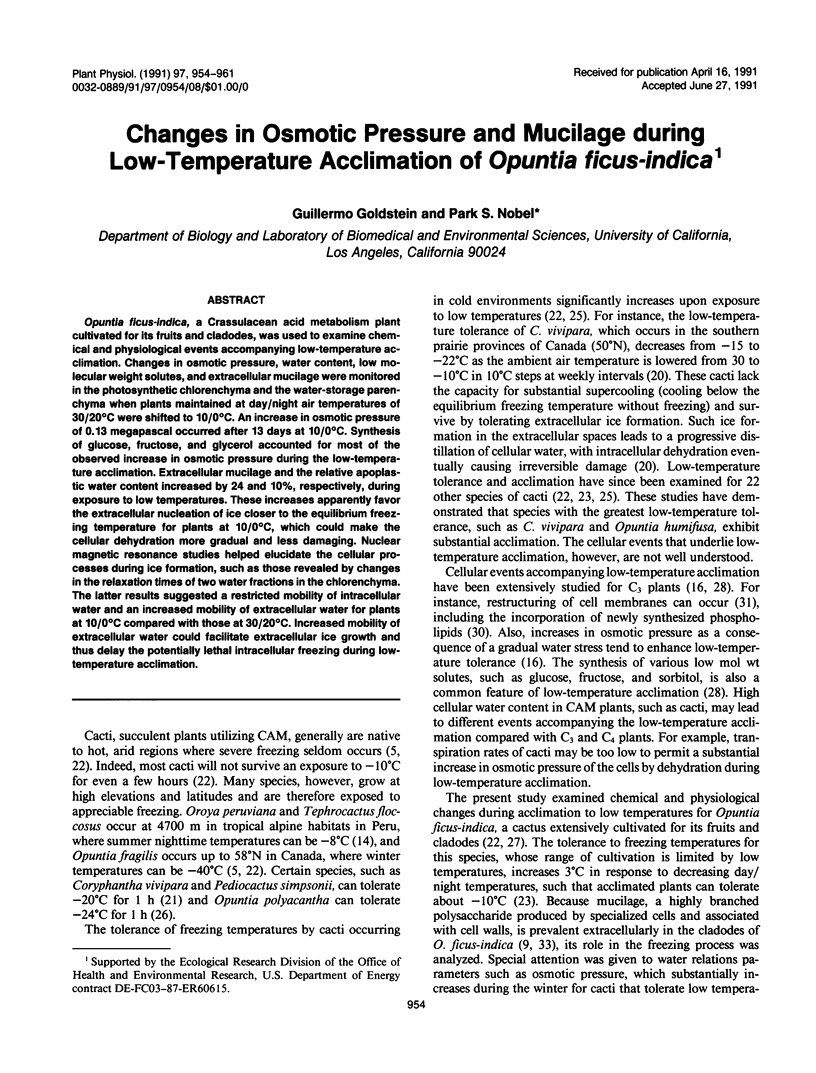
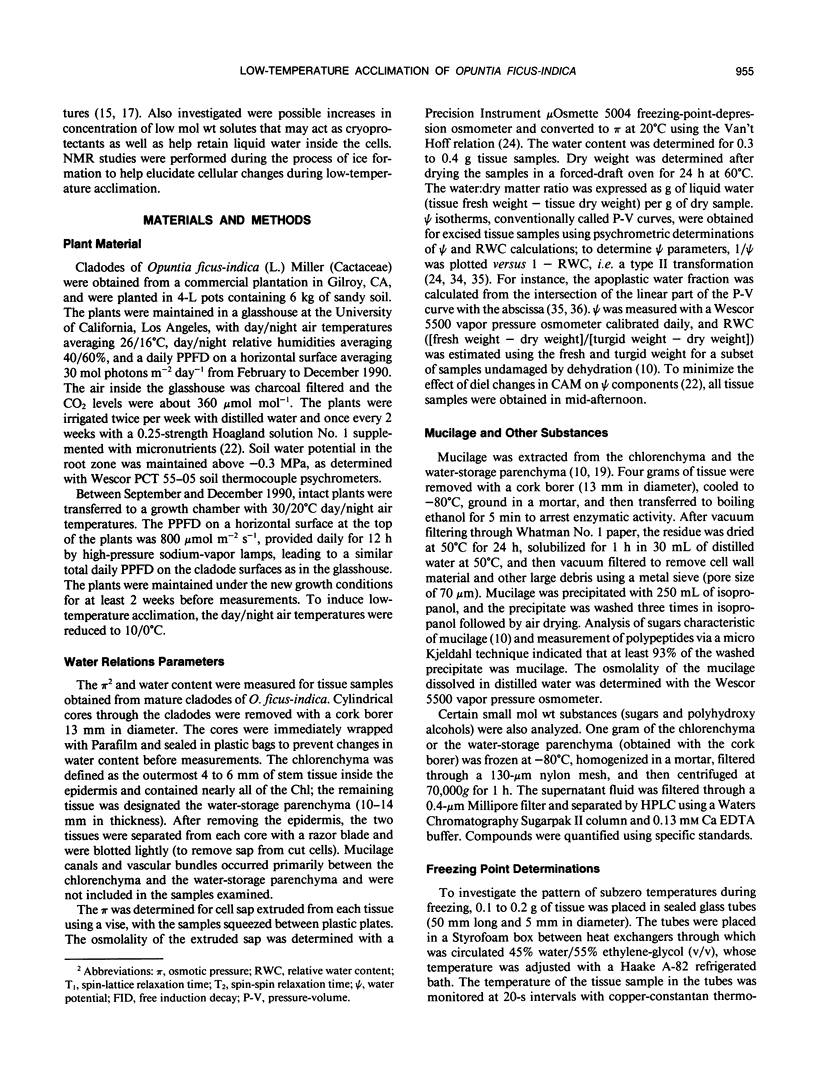
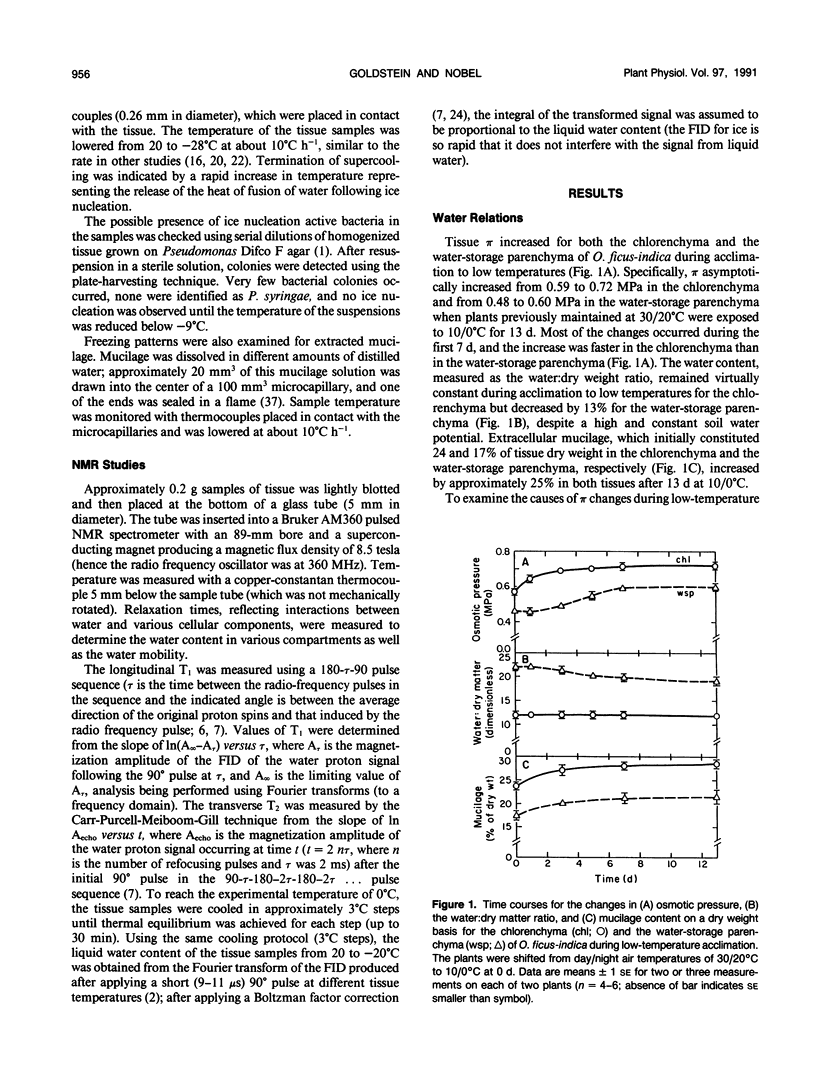
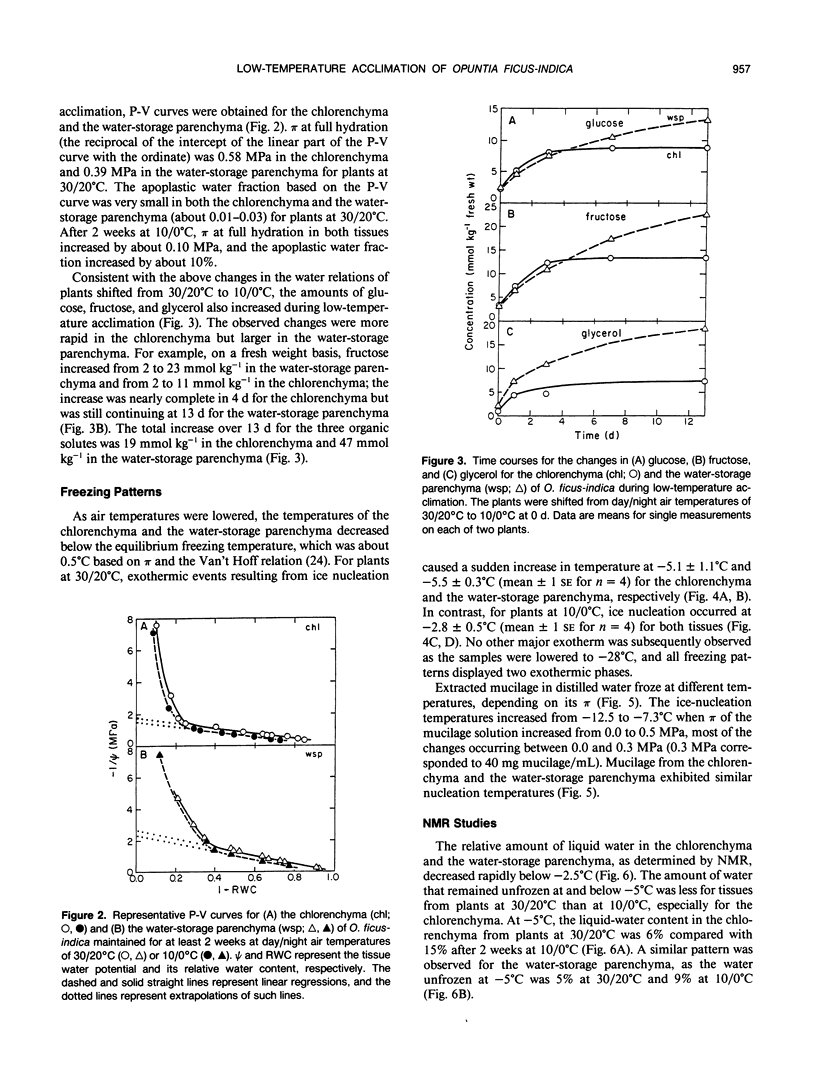
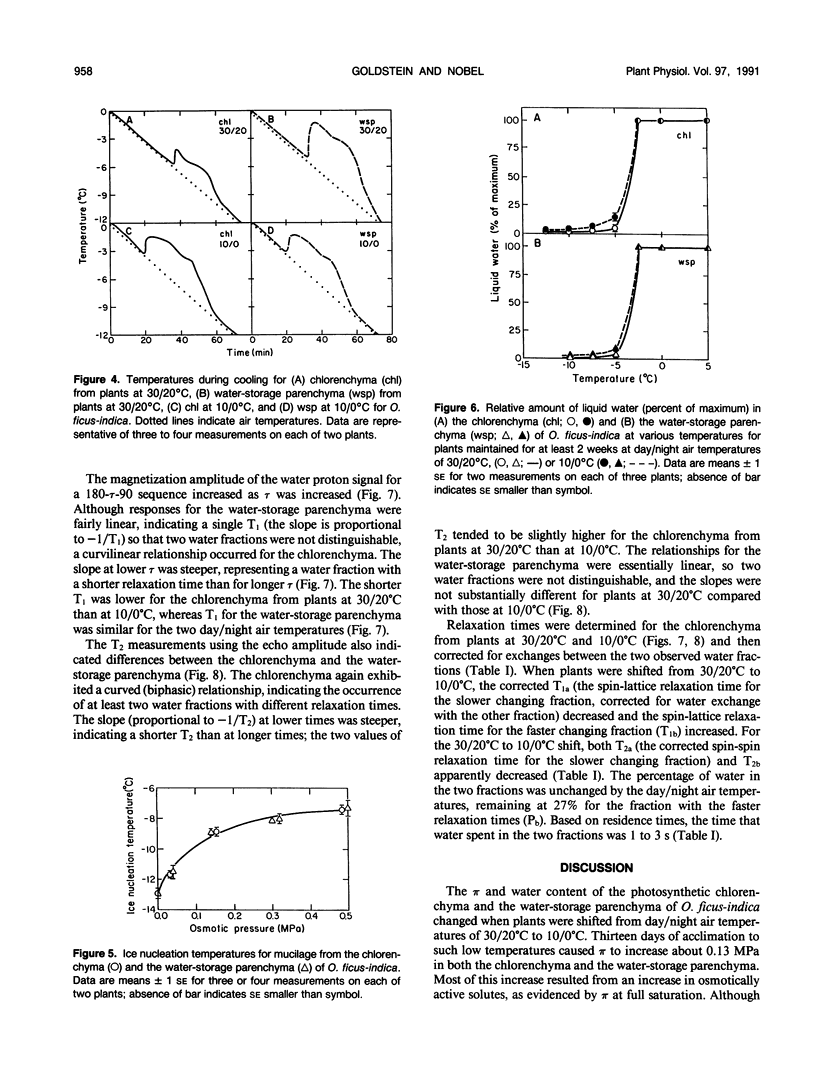
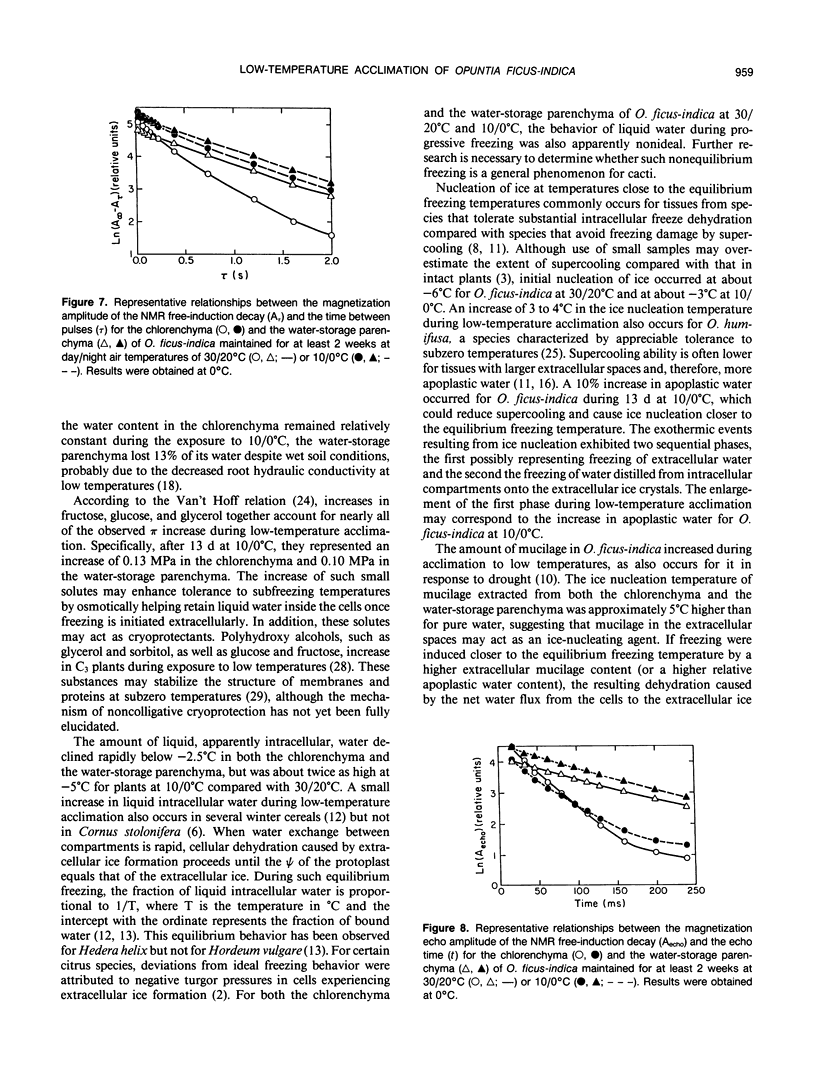
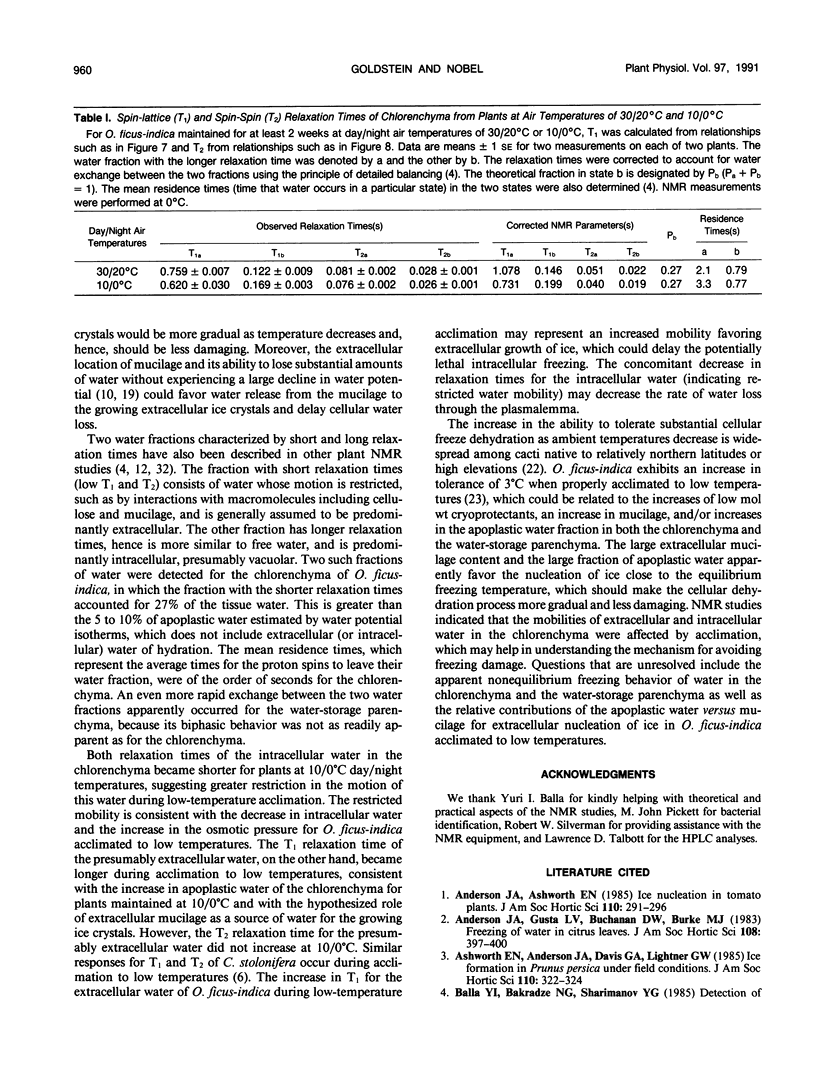
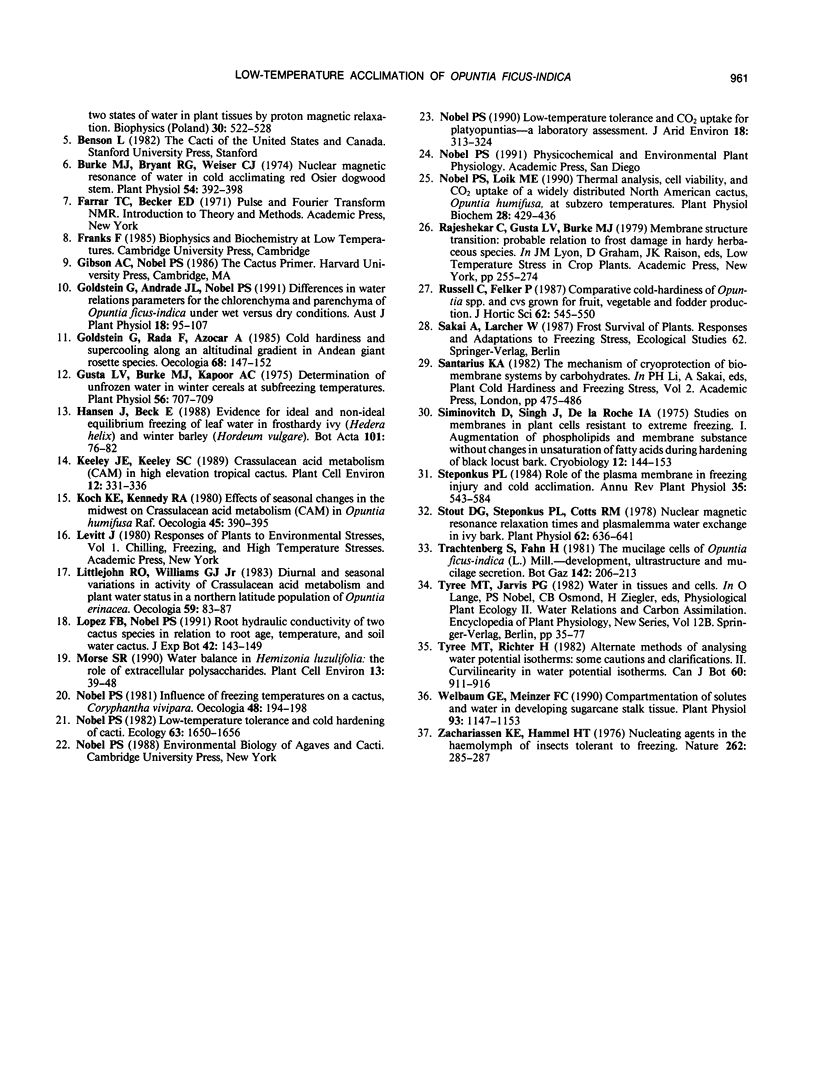
Selected References
These references are in PubMed. This may not be the complete list of references from this article.
- Burke M. J. Nuclear magnetic resonance of water in cold acclimating red osier dogwood stem. Plant Physiol. 1974 Sep;54(3):392–398. doi: 10.1104/pp.54.3.392. [DOI] [PMC free article] [PubMed] [Google Scholar]
- Gusta L. V. Determination of unfrozen water in winter cereals at subfreezing temperatures. Plant Physiol. 1975 Nov;56(5):707–709. doi: 10.1104/pp.56.5.707. [DOI] [PMC free article] [PubMed] [Google Scholar]
- Siminovitch D., Singh J., de la Roche I. A. Studies on membranes in plant cells resistant to extreme freezing. I. Augmentation of phospholipids and membrane substance without changes in unsaturation of fatty acids during hardening of black locust bark. Cryobiology. 1975 Apr;12(2):144–153. doi: 10.1016/s0011-2240(75)80006-x. [DOI] [PubMed] [Google Scholar]
- Stout D. G., Steponkus P. L. Nuclear magnetic resonance relaxation times and plasmalemma water exchange in ivy bark. Plant Physiol. 1978 Oct;62(4):636–641. doi: 10.1104/pp.62.4.636. [DOI] [PMC free article] [PubMed] [Google Scholar]
- Welbaum G. E., Meinzer F. C. Compartmentation of solutes and water in developing sugarcane stalk tissue. Plant Physiol. 1990 Jul;93(3):1147–1153. doi: 10.1104/pp.93.3.1147. [DOI] [PMC free article] [PubMed] [Google Scholar]
- Zachariassen K. E., Hammel H. T. Nucleating agents in the haemolymph of insects tolerant to freezing. Nature. 1976 Jul 22;262(5566):285–287. doi: 10.1038/262285a0. [DOI] [PubMed] [Google Scholar]


